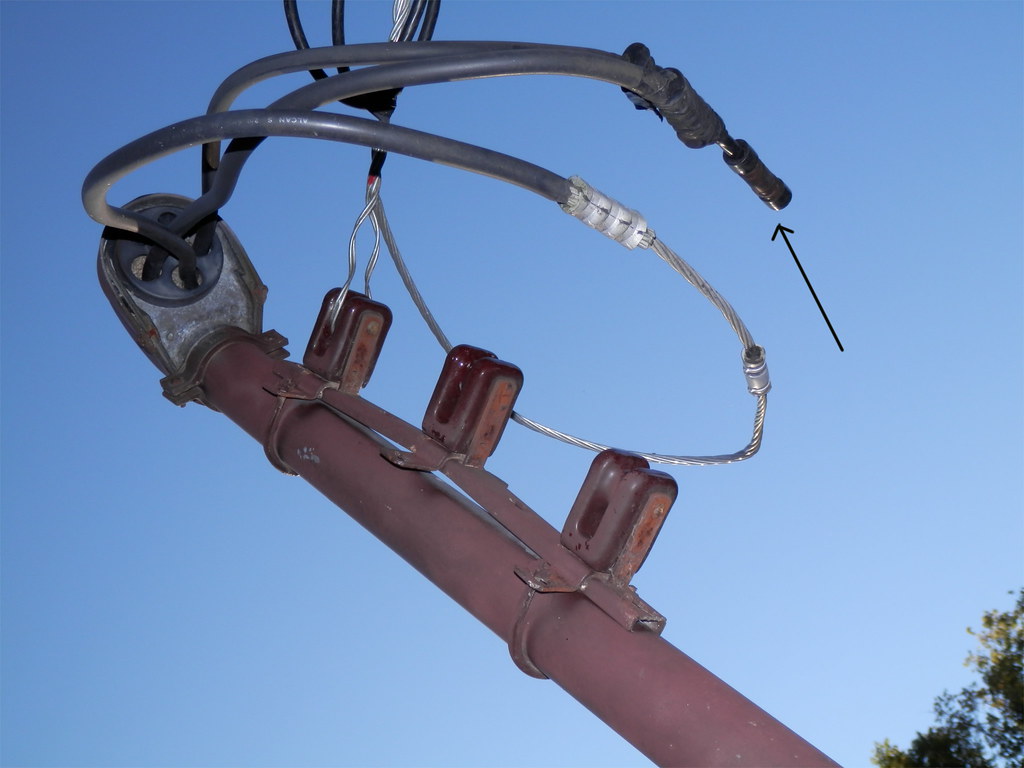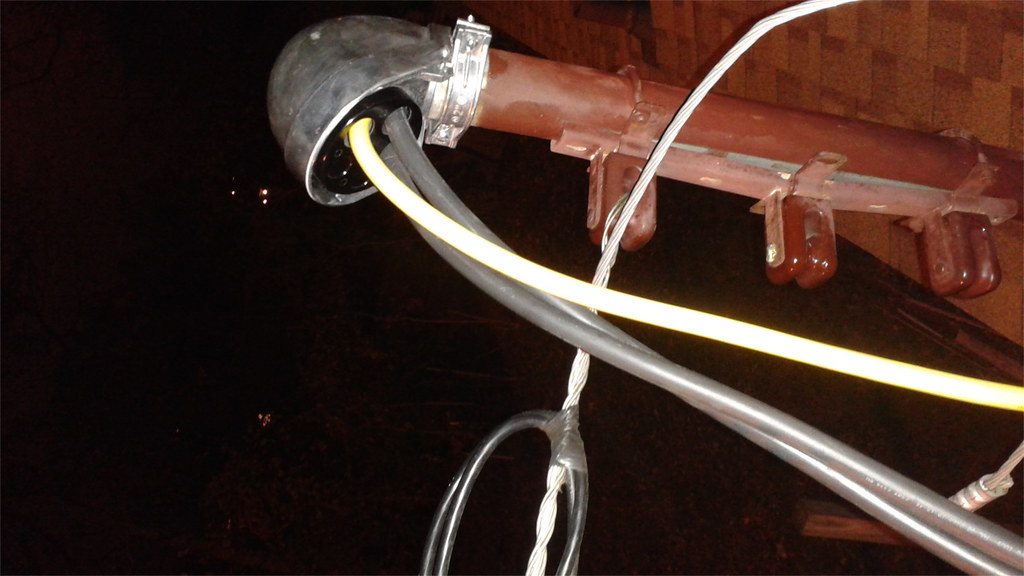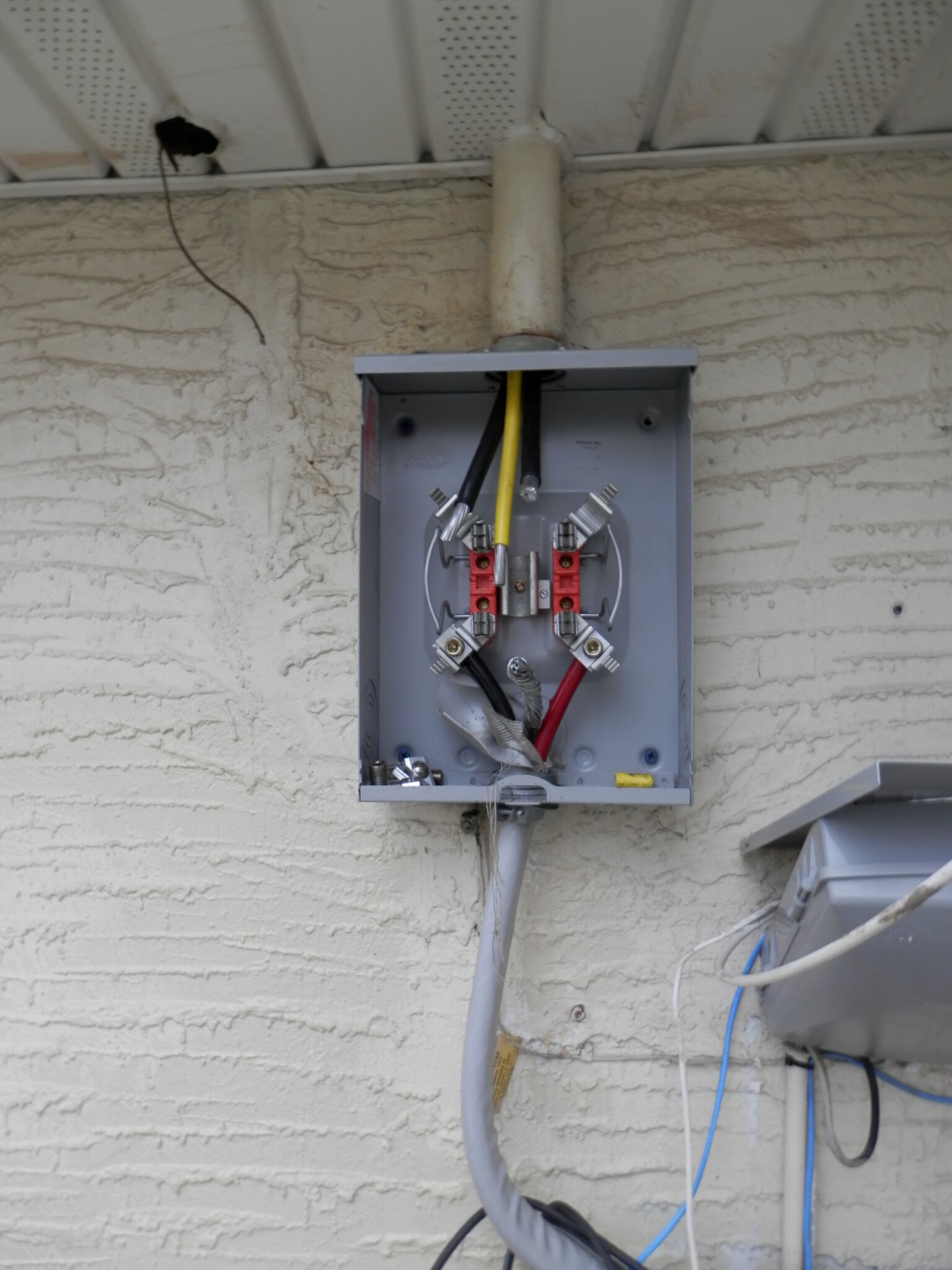Hello Folks,
Originally the old electrical point of entry installation consisted on 100 amps everything (socket meter, circuit breaker, cables, etc). So it has 2/0 cables traveling down from the weather head via a metal conduit to the meter socket (meter socket is new and is rated at 200 amps). I measured the outer diameter of the conduit, and it seems to be around 2 inches; as indicated before the current service entrance cable travelling through the conduit is 2 / 0 (100 amps), and I am in the process to replace it with aluminum 4 / 0 (200amps) since everything will be 200 amps in the near future. Would I need to change the conduit and the weather head cap or would the current one suffice?
Also, I understand that 3 feet of 4 / 0 cable shall be hanging out of the weather head up on the roof for the utility tie-in. The power to the house has been disconnected at the weather head, but apparently the utility did not disconnect the neutral, and since it is a neutral I would believe that it would be safe to cut it off? On top of that there are some prongs or crimped connectors on the my end of the cable that I believe the utility company installed in order to tie in both cables, and again I would need to cut them off in order remove the old cable and the new cable would not have them; but at first it (prongs or crimps termination) seems to be something that the utility company would simply reinstall on my new 4 / 0 cables. The pic below depicts the situation:

Originally the old electrical point of entry installation consisted on 100 amps everything (socket meter, circuit breaker, cables, etc). So it has 2/0 cables traveling down from the weather head via a metal conduit to the meter socket (meter socket is new and is rated at 200 amps). I measured the outer diameter of the conduit, and it seems to be around 2 inches; as indicated before the current service entrance cable travelling through the conduit is 2 / 0 (100 amps), and I am in the process to replace it with aluminum 4 / 0 (200amps) since everything will be 200 amps in the near future. Would I need to change the conduit and the weather head cap or would the current one suffice?
Also, I understand that 3 feet of 4 / 0 cable shall be hanging out of the weather head up on the roof for the utility tie-in. The power to the house has been disconnected at the weather head, but apparently the utility did not disconnect the neutral, and since it is a neutral I would believe that it would be safe to cut it off? On top of that there are some prongs or crimped connectors on the my end of the cable that I believe the utility company installed in order to tie in both cables, and again I would need to cut them off in order remove the old cable and the new cable would not have them; but at first it (prongs or crimps termination) seems to be something that the utility company would simply reinstall on my new 4 / 0 cables. The pic below depicts the situation:







